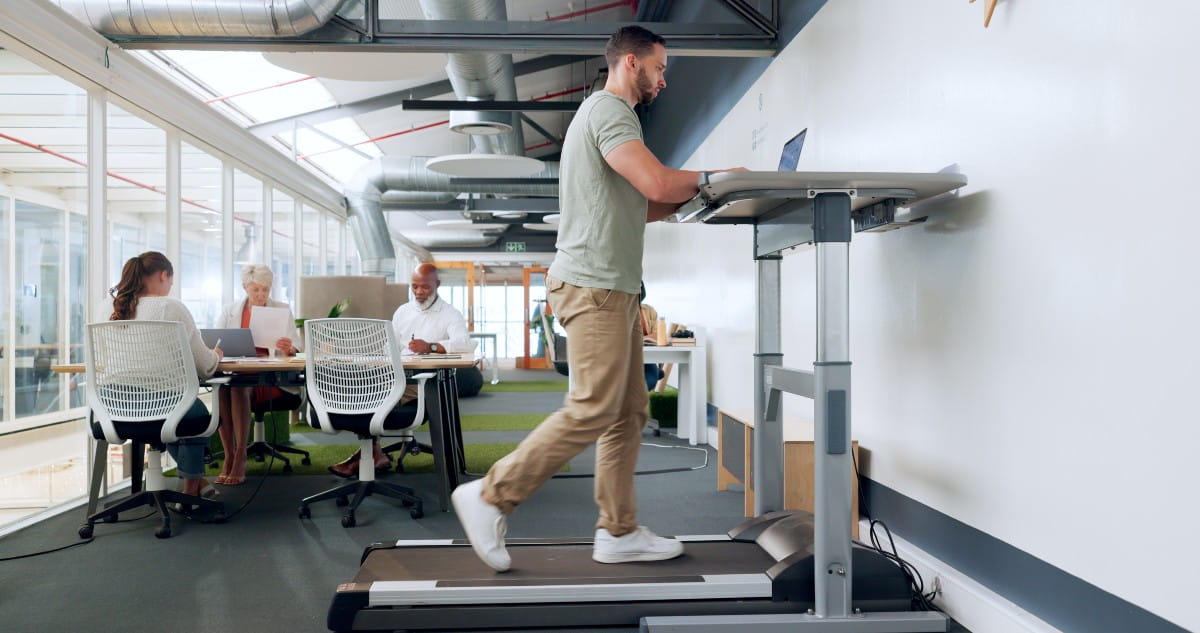Protecting your heart health while working a desk job just got easier! Check out cardiac health exercise tips from Lisa McNeil, Fitness Manager at Riverside Wellness and Fitness Center, to promote healthy living.
The importance of heart health
According to the National Heart, Lung and Blood Institute, heart disease is the top cause of death for both males and females. That’s why following a heart-healthy diet and getting regular physical exercise is so important.
“Experts recommend that adults get at least 150 minutes of exercise each week,” explains Lisa McNeil, Fitness Manager at RWFC. The heart benefits of regular physical activity include:
- Managing your risk factors for coronary heart disease, including lowering blood pressure and cholesterol
- Promoting a healthy body weight
- Reducing your risk of a heart attack
- Strengthening the heart muscle
Health risks of a sedentary lifestyle
People who don’t get regular physical activity risk developing:
- Certain cancers, such as colon, breast and uterine
- Heart disease, including coronary artery disease and heart attack
- High blood pressure
- High cholesterol
- Mental health conditions, such as depression and anxiety
- Obesity
- Osteoporosis
- Stroke
- Type 2 diabetes
Incorporating heart health into your workday
Even if you have to spend a good chunk of your day sitting at a desk, you can take steps to promote your heart health. Here are some tips:
- Bring lunch – and heart-healthy snacks – from home
- Opt for the stairs instead of the elevator
- Park in the back row of the parking lot or garage
- Stand up regularly – at least once an hour
- Use your lunchtime or breaks for physical activity
5 desk exercises for a healthy heart
The American Heart Association reports that the average adult sits between six and eight hours each day. Try these simple desk exercises to make your chair time more heart-healthy. Sit in a chair for these first three exercises:
- Finger reaches. Reach both arms straight up in the air over your head. Hold for 10 seconds. Then, extend your right hand a bit further and hold for 10 seconds. Repeat with your left hand.
- Neck stretch. Roll your head towards your right shoulder as far as you can. Gently use your hand to press a little and feel the stretch. Hold for 10 seconds, and repeat on your left side.
- Shoulder blade squeezes. Squeeze your shoulder blades together as hard as possible for 10 seconds, then release. Repeat several times.
- Calf raises. Stand up behind your desk chair, holding on for support. Raise your heels off the floor until you’re standing on your tiptoes. Then, slowly lower yourself back down on your heels. Repeat 10 times.
- Chair squats. Stand up from your desk chair. Then, slowly lower your body back down as if you’re going to sit in your chair, but stop right before you reach the chair. Slowly raise your body back up to standing position. Repeat 10 times.
Creating a heart-healthy workspace
If it’s an option, consider setting up a standing desk. “Research has shown that using a standing desk can lead to a variety of benefits, including lowering your risk for heart disease, reducing blood sugar levels and lowering risk for obesity,” explains Lisa McNeil, Fitness Manager at RWFC. Use a walking pad (a very low-profile treadmill) for added heart health benefits. By choosing smaller office furniture, you can leave space in your office for quick stretching and cardio bursts.
Quick exercises for work breaks
For a speedy cardiovascular burst while at work, try out these exercises on your next break:
- Jumping jacks. Do jumping jacks for one minute, rest for 30 seconds and repeat.
- Stairway workout. This exercise works best if your office has a back stairway with several flights. Run – or briskly walk – up as many sets of stairs as you can. Walk back down at a slower pace. Repeat if desired.
Boost your cardiovascular health
If you have questions about changes you can make in your daily life to improve your heart health, we’re here to help. Start by speaking with your Riverside Health primary care doctor.



